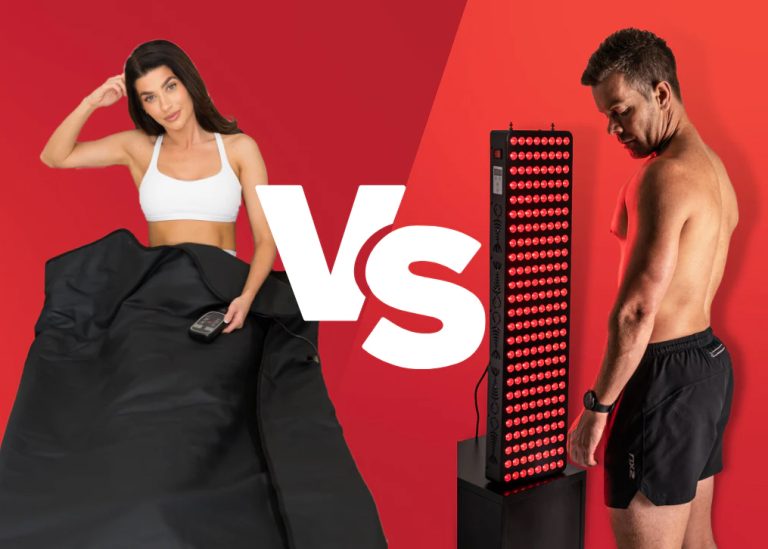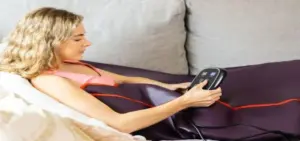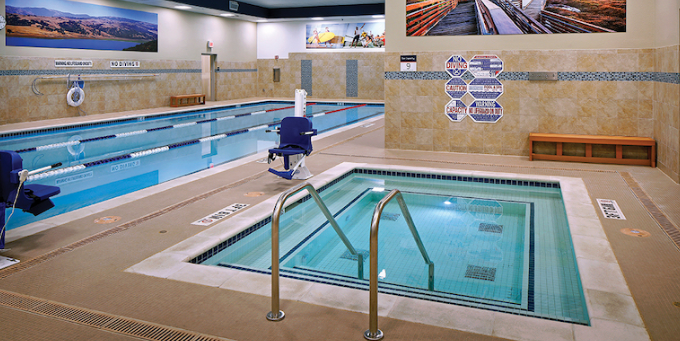Our Sunasusa team offers deep knowledge of sauna blankets and red light therapy, as well as insights into their unique health advantages. We help you in determining which choice best meets your wellness objectives. Red light therapy and sauna blankets both have strong advantages for improving physical appearance and health.
However, their procedures differ: Sauna blankets use far-infrared radiation to get people sweating, which helps with detoxification, increases metabolism, and may help with weight reduction. Red light therapy is mostly used for revitalizing the skin using low-wavelength red light. Learn the differences between red light therapy vs. infrared sauna blankets in more detail by reading on, and decide which is better for your health objectives.
Table of Contents
What is red-light therapy?
Red light therapy is a therapeutic approach in which small doses of red and near-infrared light are applied to the body. The human eye cannot see infrared light, but the body can feel it because it feels hot and comfortable. While red light is transparent and doesn’t generate heat, it has many of the same qualities as infrared light.
The process usually involves exposing the skin to these wavelengths of light using a red light treatment gadget, such as a lamp or laser. These gadgets release light that is in the red range. Other names for red light treatment include low-level laser therapy, low-power laser therapy, and light therapy.
Red light therapy vs. Sauna
Saunas and red light treatments have similar therapeutic effects, although they function differently. Red light therapy is a skin-penetration technique that uses low-level red and near-infrared light frequencies to improve skin health, reduce irritation, and encourage cellular repair. Sessions are usually brief, and it doesn’t produce much heat.
On the other hand, heat—whether from a traditional or infrared sauna—is used to encourage sweating, relaxation, cleansing, and better circulation. Spas offer a full-body feeling, frequently at greater temperatures, which can help reduce stress and relax muscles. Because each therapy has specific advantages, it can be used for a variety of health objectives and preferences.
How does red-light therapy work?
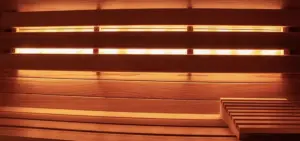
Red light therapy functions by exposing the skin and cells to low levels of red and near-infrared light. This light is absorbed and metabolized, ultimately converting into cellular energy, particularly within the mitochondria, the cell’s energy powerhouse. Through this process, known as photobiomodulation, various biological processes at the cellular level are stimulated.
Among the main outcomes of red light treatment are:
- Enhanced ATP production: Light energy stimulates the synthesis of adenosine triphosphate (ATP), an essential chemical for metabolizing energy and cell function.
- Better circulation: Red light treatment can assist in improving capillary and circulation of blood, which helps to remove waste materials and chemicals from the body while providing oxygen and nutrients to the tissues.
- Decreased inflammation: Its anti-inflammatory properties aid in reducing tissue redness, swelling, and discomfort.
- Enhanced synthesis of collagen: Red light treatment can activate the skin’s fibroblasts, which improves the flexibility, tone, and smoothness of the skin. This may lessen the visibility of scars and wrinkles.
- Rapid tissue repair and wound recovery: Red light treatment can accelerate the healing of wounds, cuts, and injuries by encouraging cell growth and regeneration.
Does red-light therapy make you tan?
Red light treatment does not cause tanning. Low-level ultraviolet (UV) frequencies are used in red therapy to penetrate the skin and encourage cellular regeneration and healing, in contrast to ultraviolet (UV) light, which promotes tanning and increases the formation of melanin. It is mostly utilized for its medicinal properties, which do not impact skin color and include lowering inflammation, promoting wound recovery, and improving skin texture.
Benefits and drawbacks of red light therapy

The following benefits and drawbacks of red light therapy are given below:
Benefits of Red Light Therapy:
- Skin renewal: Skin renewal promotes the formation of collagen, lessens wrinkles, and smooths out skin tone.
- Wound healing: Wound healing promotes quicker recovery from burns, wounds, and other diseases.
- Pain relief: Reduces discomfort brought on by diseases including joint pain, arthritic muscles, and so on.
- Decreased inflammation: This helps to decrease swelling and pain in different body areas.
- Enhanced circulation: Promotes blood flow, which helps remove toxins and provide nutrients.
- Enhancement of mood: May increase mental and physical energy by increasing cellular activity.
- Hair growth: In some situations, particularly for disorders like hair loss, it increases hair regeneration.
Drawbacks of red light therapy:
- Time commitment: For visible benefits, regular sessions spread out over several weeks or months are needed.
- Cost: The initial outlay for equipment or expert consultations may be high.
- Eye protection: Safety glasses are essential for protecting the eyes from any harm.
- Limited research: There is currently insufficient data to properly support some claims on the benefits of RLT, despite its promise.
- Individual variability: The outcome might change based on the kind of skin, severity of the problem, and consistency of therapy.
- Possible adverse effects: When used wrongly, it is possible to experience uncommon negative effects such as skin irritation or irritation in the eyes.
- Not appropriate for everybody: Speaking with a doctor is advised since RLT may not be appropriate for some medical problems or drugs.
Who is not fit to use red light therapy?
Red light therapy may cause adverse effects in certain people, especially if it pulses at certain frequencies. Furthermore, various physical areas may react differently to red light therapy. It is advised that the following people avoid red light therapy:
- Kids.
- People who are expecting.
- People who suffer from thyroid disorders.
- Those with epilepsy.
- Individuals who use injectables, drugs, or tanning lotions that increase light sensitivity
- People who have tattoos.
Note that darker skin tones and tattoos have the potential to absorb light faster than lighter, clean skin tones. To avoid pain or sensitivity, patients with darker skin tones or tattoos may need to have the length of their therapy adjusted.
What is the effect of red light on the brain?
Red light treatment has been demonstrated to improve neuronal regeneration and memory retention. Neuron regeneration is essential for brain healing and repair, especially when treating traumas. Red light treatment can promote synaptic development, which supports the brain’s inherent ability to form new neural connections.
It usually takes around 6 to 8 weeks of regular use for red light therapy to show apparent benefits. Using red light treatment for four to five sessions a week, at least once a day is the definition of consistency. Red light treatment sessions should last no more than 10 minutes each to prevent overexposure and to get the best possible outcomes.
What is a sauna blanket?
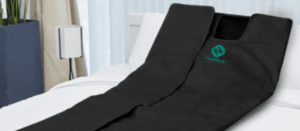
A device meant to replicate the effects of a conventional sauna, a sauna cloth is small and portable. It’s made of a material that reflects heat and wraps around the body to trap heat and cause perspiration. Infrared blankets are designed to promote relaxation, cleansing, and possible weight reduction by directly releasing heat into the body through the use of infrared technology.
When using the blanket, users usually lie down inside it for a certain amount of time, which gives them a sauna-like feeling. Sauna blankets are much-liked because of how convenient they are and how well they work as healing appliances for the home.
Benefits and drawbacks of sauna blankets
The following benefits and drawbacks of sauna blankets are given below:
Benefits of sauna blankets:
- Convenience: With sauna blankets, you may experience the advantages of a bath without leaving the comforts of your house.
- Detoxification: By encouraging sweating, they help the body rid itself of pollutants and chemicals through the skin.
- Relaxation: The heat emanating from sauna blankets can lead to decreased stress, relaxed muscles, and an overall improvement in well-being.
- Possible weight reduction: A higher metabolism and higher caloric expenditure during spa blanket sessions have led to weight reduction in certain users.
Sauna blanket drawbacks:
- Overheating: Improper usage of a lot of heat can result in pain, dehydration, and possibly heat-related disorders.
- Limited Mobility: You can’t move about as much while you’re covered up in a spa blanket, so it might not be ideal for everyone.
- Skin Sensitivity: Extended heat exposure can irritate or cause pain in those with sensitive skin.
- Safety Concerns: Pregnancy and heart problems are two medical conditions that may increase the danger of using sauna blankets; thus, it is best to speak with a doctor before using sauna blankets.
Who is not fit to use a sauna blanket?
Sauna blankets might be dangerous because of their high heat content. It is recommended that the following people refrain from using sauna blankets:
- Kids.
- People who are expecting.
- People who have cardiac issues.
- People who have elevated blood pressure.
- Diabetes sufferers.
- Dehydrated people.
It’s important to speak with a doctor before using a thermal blanket, particularly if you take any medications. Infrared blanket use might have negative repercussions if this isn’t done.
Do sauna blankets help with weight loss?
Sauna blankets help shape the body and promote sweating, which is an efficient way to lose water weight. Many people use spa blankets to reduce water retention and reduce the appearance of scars. Still, one must be realistic about the amount of weight that may be lost. While infrared blankets can help users burn hundreds of calories during sessions, their main purpose is not to help people lose a significant amount of weight.
Is it possible for sauna blankets to reduce bloating?
Sauna blankets can reduce bloating by aiding in the body’s removal of toxic chemicals. Sauna blankets’ intense heat effectively targets and spreads the fat deposits that lead to bloating.
Red light therapy vs. sauna blanket: which is best?
Two useful methods for improving physical beauty and health are red light therapy and sauna blankets. Both can help with detoxifying effectively and increase circulation. Even if they have certain advantages in common, they each have special qualities suited to particular tastes.
- Sauna blankets are excellent for achieving health-related goals, including weight loss, inflammation reduction, and detoxification.
- Red light treatment excels in cosmetic applications, especially when it comes to improving the appearance of skin.
Which choice is better depends on personal requirements and expectations, which emphasizes how crucial it is to take preferences into account when making a decision.
FAQs
The most frequently asked questions are given below:
Are infrared blankets better than saunas?
Infrared bath blankets function by stimulating living tissues with electromagnetic energy, according to a study published in 2019. According to the same study, these blankets work better than spas and may have other health advantages, such as enhancing blood circulation and metabolism.
What comes first: red light therapy or sauna?
But remember, you should never use your Vital Red Light gadget inside a spa. For optimal results, utilize your red light therapy equipment around five minutes following your sauna session. This is because baths work best when used individually since they emit radiation at separate wavelengths.
Do sauna blankets work?
First, research indicates that certain therapies that cause sweat to occur frequently—five times a week—may have beneficial effects on heart health. Reduced blood pressure, inflammation, and oxidative stress may be the causes of this.

